In today’s fast-paced business environment, effective talent management is a necessity. Companies that strategically manage employee journeys from the moment of recruitment to long-term career growth gain a competitive edge.
Find a breakdown of the complete talent management workflow and how modern software streamlines the entire process.
Let’s walk through each stage of the talent management journey and see how software can enhance the process.
Attracting the Right Talent
The journey begins with recruitment. Talent management software enhances job postings, automates resume screening, and helps HR teams identify ideal candidates faster. By leveraging AI-powered insights and customizable workflows, businesses can attract high-potential applicants that align with their culture and long-term goals.
This is the first crucial step in building a strong talent management foundation.
Structured and Smart Onboarding
Once the right candidate is hired, a structured onboarding process ensures they start strong. Integrated talent management software allows for personalized onboarding plans, document automation, and role-specific training assignments. This not only improves the new hire experience but also accelerates productivity during the first 90 days.
Ongoing Learning and Development
A core pillar of effective talent management is continuous learning. Modern platforms offer centralized access to training resources, track employee progress, and suggest learning paths based on performance and goals.
Investing in development boosts engagement and helps retain top performers who are eager to grow.
Performance Monitoring and Feedback
Talent management software enables real-time performance tracking and ongoing feedback rather than relying solely on annual reviews. Managers can set SMART goals, monitor progress, and initiate 360-degree evaluations, making performance management a continuous, collaborative process.
Succession Planning and Internal Mobility
An often overlooked phase in the talent management lifecycle is internal mobility. With data-driven insights, HR can identify high-potential employees for leadership roles or lateral moves. Talent management software helps visualize succession plans and fills gaps before they become problems.
Promotion and Career Pathing
The final stage in the talent management workflow is promotion. Employees want to see a clear path forward. With performance data, skills assessments, and development milestones all housed in one platform, managers can make informed promotion decisions that reward merit and align with business needs.
Conclusion
From the first interview to a well-earned promotion, talent management software supports every stage of the employee lifecycle. By investing in a full-featured platform, organizations can build stronger teams, retain top talent, and future-proof their workforce with confidence.













